It has really been a long time since my last post and I'm not sure who or what to blame. I've come to realize that the nature of this blog fluctuates in relationship to the need I feel for sharing experience with you, and lately I've been pretty selfish.
But not anymore, I just came back from a very exciting trip to West Africa and had the opportunity to visit Dogon Country in Mali, close to the border with Burkina Faso. Surrounded by dessert, Dogon Country refers to a series of villages located along a 150km escarpment and plateau. This dramatic landscape shelters one of the most "intact" cultures I ever seem: walking around their narrow mud house is like going back to prehistoric time. Unfortunately, the only sign of modernity is plastic junk that one sees scatter around....not too much though, and really very little compared to other places in Africa.
Picture above are one of the most common pieces of Dogon architecture: the granaries, usually filled with millet, sorghum and other indigenous grains, these will guarantee the food supply for the family until next rainy season. Tall and thin and made with a mix of mud and straw, they have to be above the ground to protect the grains from vermin. Inside, they are divided into diferent compartments that according to our guide represent the pattern of the cosmos. Dogon culture is very unique partially due to the harsh environment they inhabit and the long distance needed to reach the closest town. Very few product are imported from the urban centers and the only export, besides tourist souvenirs, are onions.
Onion were introduce by Marcel Griaule, a french anthropologist who exposed the Dogon to the rest of the world in the 40's. After living with them for 15 years, his studies concluded that the Dogon culture is extremely complex, a needed reputation for the people who many considered primitives. Among other things, he also taught them how to utilize their sandy soil to grow onions and helped them set up dams for irrigation. Today, the onions are sold throughout Mali and Burkina Faso. The picture above was taken at the village of Nombori, which is located at the bottom of the escarpment. For this reason, they have easier access to water allowing for thirsty vegetable to be grown. Up in the plateau, is really remarkable how as you walk from one village to another you see every little piece of land being utilized, with small plots of onions.
Women take the green part of the onions and smash them into balls. Gender roles are extremely important in Dogon society, and women are not in the best place, at least in comparison to western society. For instance, when women have their period, they're isolated in little huts; they have no say in all village affairs, and genital mutilation is still widely practice. During the days that we spend trekking around the villages, we saw women do most of the work: they look for wood and collect water, they pound the millet and work the fields. Men would spend a lot of time at the villages' meeting place, the Togu-na or Case a' Palabras. Here is where all the village affairs are discussed, not surprisingly women are not allowed. Something neat about these Togu-na is that they are very low, about 3ft to 4ft high. The idea is that you cannot stand so arguments always remain at the same level, calmed.
Getting back to the onion, the balls are then place in the roof of their huts. Once dry they are preserved and used for sauces. Other foodstuff are also dry in the roof to protect them from hungry goats and sheep that are commonly seem grazing around.
I had the opportunity to try millet fufu (boiled flour) with baobab sauce, made with dry onion leaves, fish powder, and baobab leafs, which if it wasn't for the slimy texture i would eat it everyday. Besides millet, eaten at all meals and in different ways, there is not much else. Those villages that have good access to water grow eggplants, squashes, tomatoes, and lettuce. But there is little meat, eggs, and milk. The tourist usually get a choice of beans and rice, couscous, or pasta, with a tomato based sauce a some chicken. Even though the food was ok, visiting latrines constantly and unwillingly became a big part of my trip.
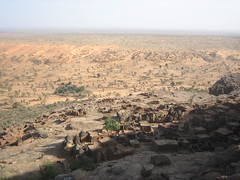
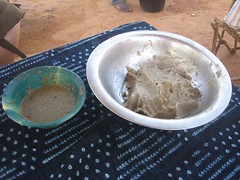
For the Dogon, agriculture plays an essential role into their lives. Every year as the rain comes, sprouts of life pop up from the soil signaling a good crop. The harvest will determine their imminent future. Once the rain has gone elsewhere, houses will have to be rebuilted and gods called upon for the next drop of water. This continuous cycle has kept pristine a culture that rejects the values of the many in other parts of the world. So different, so wrong and so right, it is difficult to predict their future: undoubtedly a very uncertain one, with a climate that seems to get hotter and hotter, plastic that remains in the ground after the rain is gone and a dessert that keeps covering the little top soil left with infertile sand.

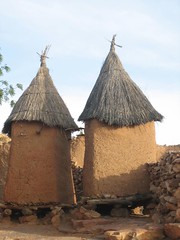

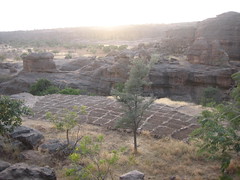
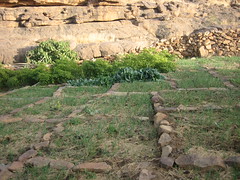


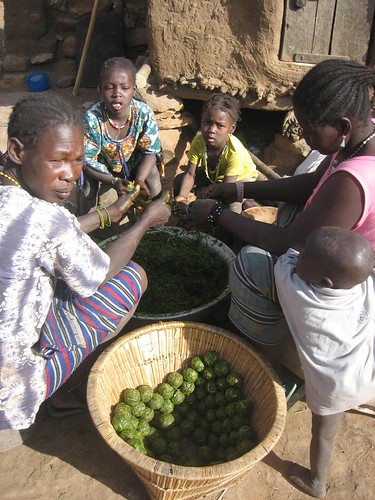
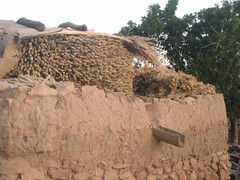
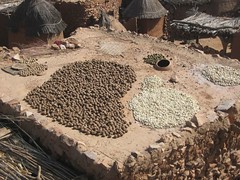
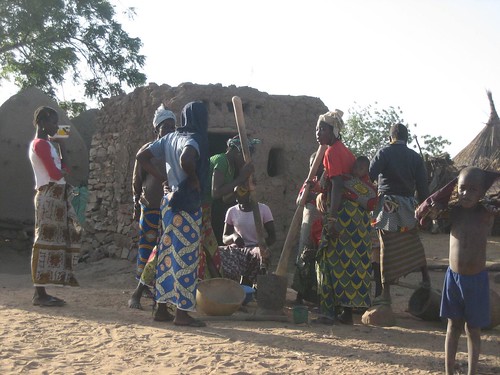
No comments:
Post a Comment